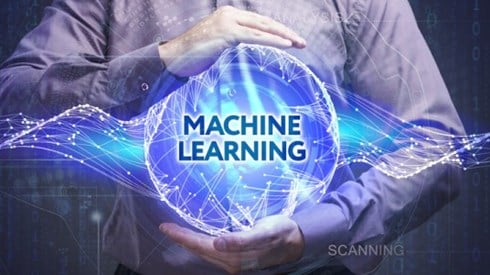Uncertain Times Squared: The Future of Investing for Insurers

Alton Cogert | March 03, 2017

When thinking about the future, let alone the future of investing for insurers, it is easy to either be very expansive or too limiting. Does one look at what developments might occur over the next 30+ years, speculating on an increasingly faster changing, more complex future? Or, does one look at what current trends tell us and merely extrapolate a bit over the next year or two?
Instead, I will take the middle ground and look at possible futures over the next 7 to 10 years. Why this medium time frame?
First, it allows everyone to start thinking practically about what many of us will be dealing with during our current careers. Second, this time frame allows one to extrapolate current ideas and trends into a reasonable time frame within which many may effectively come to fruition. And, finally, it is similar to the time frame of our strategic asset allocation analyses and seems to fit the long-term views most insurers take on investments.
But, instead of asking the question, "What do current trends and consensus opinions say about expected returns, risks, and correlations of different asset classes?" let's take a broader approach by starting with possible future economic and sociological environments.
What major new ideas, technologies, and ways of conducting our lives do we see impacting our economy and, with it, financial markets?
There are quite a few that are already occurring today, including the use of genetics, alternative energy, fully autonomous vehicles, and robotics. However, the major approaches that are behind many of these new "inventions" are artificial intelligence (AI) and, related to that, machine learning (ML).
New Technologies
AI is intelligence exhibited by a machine that perceives its environment and takes actions that maximize its chance of success at some goal. How can a machine obtain such intelligence? One way is through the use of machine learning. ML is a type of artificial intelligence that provides computers with the ability to learn without being explicitly programmed. ML focuses on the development of computer programs that can change when exposed to new data.
You have probably also heard the words "big data," which is a term for data sets that are so large or complex that traditional data processing application software is inadequate to deal with them. ML can use big data to "school" the computer and develop artificial intelligence.
An easy example to contemplate are the billions of data points uploaded by Tesla drivers to the company, as human drivers operate the vehicle. These data points are used by Tesla's computers to "learn" how to drive a car and develop and improve Tesla's "auto-pilot" capability, which is subsequently downloaded as a software update to Tesla vehicles.
Another example of ML is the use of a recommender engine when you visit Amazon online. We've all seen the "other people who bought this, also bought that" or "you might also like this" when we browse the Amazon site. It is an ML approach using big data culled from your browsing history and those of others to find items in which you might be interested, smoothing the wheels of commerce and making your Amazon visits more effective (for you and Amazon).
ML can be used in many applications, but it also poses one of the greatest threats to (or opportunities for) the replacement of many activities (tangible and intangible) performed by us, the human workforce. Related to this, it also can be used to analyze financial markets.
Imagine using ML to predict activity in the markets. At first, the AI will get it wrong, since it will be humans that will begin programming the AI using historical results—much as we all try to understand the markets from historical data.
In fact, the first steps of this are already occurring to some degree, with the development and use of "algorithmic trading." But, we all know how difficult it is to "beat the market," be it interest rate anticipation or guessing the next move in equity, currency, or commodity markets.
Addressing Future Challenges
Now, let ML use big data from the markets and many other sources (e.g., economic or political) and see how the AI develops. Will it successfully and consistently predict market moves, making human traders' activities suboptimal? What value would be added by portfolio managers and investment strategists, if the AI can do a better job? Or are markets too subject to human emotions, perhaps making these activities not well-suited to ML?
These and many other related issues are just some challenges we can expect to see in financial markets in the next 7–10 years.
But, what about the activities conducted by the companies in whose bonds and stocks we invest? Will they need the same number of people to produce a similar volume of business if an AI can more accurately predict where, how, and when it should be selling its products or services? Will a more technologically robust company that uses AI successfully have a nearly unassailable advantage over competitors (much as we have seen with the concentration of economic power in very large tech companies today)?
This goes well beyond doing the same tasks better, faster, and cheaper, as we have already seen with the use of robots in manufacturing and distribution environments. This means doing completely different tasks that produce even better, faster, and cheaper results.
It is incumbent upon all investors to ask themselves if their investments are positioned to successfully compete in a world where AI using tools like ML will be a true game changer. And, this applies to many others who are part of the financial markets. Are rating agencies appropriately considering the impact of AI in their credit ratings of public bonds? How will rating agencies use AI to better understand our company's underlying risks?
And, especially for insurers, let's not forget the potential impact of AI on the regulatory process. Will a regulator's AI be able to connect with your company's AI to better understand the underlying risks and rewards at your company?
Investment portfolio managers, strategists, even chief investment officers and many others will all be severely impacted when AI is behind our financial markets. This would especially be different from today when it comes to the trading of financial instruments in less efficient markets, like the bond market. These are issues not just from the perspective of how all of our jobs are done but also a challenge to our own ability to use the right risk premia, yield curve assumptions, volatility, correlations, etc., in making good investment decisions.
As you can tell, in the next 7–10 years, artificial intelligence and, especially machine learning, will have a very pronounced impact on our careers, companies, and daily life.
Are you curious as to how deep these changes may go and how they may impact you?
I hope you can join me at our upcoming Insurer Investment Forum XVII. During my session, "Uncertain Times Squared: The Future of Investing for Insurers," I will expand upon AI, ML, and many other related multifaceted topics. There is a lot more that we can reasonably expect in the next 7–10 years. And, as usual, all attendees have the opportunity to add their own perspectives.
Alton Cogert | March 03, 2017

